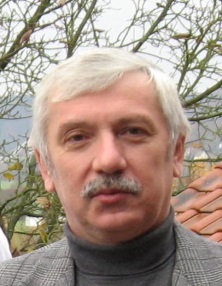News
EPJ D Highlight - The power of light-matter coupling
- Details
- Published on 28 January 2015

A theoretical study shows that strong ties between light and organic matter at the nanoscale open the door to modifying these coupled systems’ optical, electronic or chemical properties.
Light and matter can be so strongly linked that their characteristics become indistinguishable. These light-matter couplings are referred to as polaritons. Their energy oscillates continuously between both systems, giving rise to attractive new physical phenomena. Now, scientists in France have explained why such polaritons can remain for an unusual long time at the lowest energy levels, in such a way that alters the microscopic and macroscopic characteristics of their constituting matter. These findings thus pave the way for optical, electronic and chemical applications. The work has been published in EPJ D by Antoine Canaguier-Durand from the University of Strasbourg, France, and colleagues.
EPJ Data Science Highlight - Towards a scientific process freed from systemic bias
- Details
- Published on 25 January 2015

Large-scale analysis of bibliographic data can help us better understand the complex social processes in science and provide more accurate evaluation methods
Research on how science works—the science of science—can benefit from studying the digital traces generated during the research process, such as peer-reviewed publications. This type of research is crucial for the future of science and that of scientists, according to Frank Schweitzer, Chair of Systems Design at ETH Zurich, in Switzerland. Indeed, quantitative measures of scientific output and success in science already impact the evaluation of researchers and the funding of proposals. He shares his views in an Editorial spearheading a thematic series of articles entitled “Scientific networks and success in science”, published in EPJ Data Science. There, Schweitzer notes, “it is appropriate to ask whether such quantitative measures convey the right information and what insights might be missing.”
EPJ C Highlight - Shedding new light on dark matter
- Details
- Published on 13 January 2015

Study shows significant progress in determining what dark matter is not made of, thanks to much more sensitive detectors capable of identifying the presence of elusive particles, called WIMPs
According to astronomical observations, dark matter constitutes a five times greater proportion of the universe than ordinary matter, which only makes up 5% of the matter in the universe. The remaining 70% of the universe is known as dark energy. However, we still do not know what dark matter is made of. Indeed, none of the known elementary particles fulfil the criteria to explain dark matter. One theory suggests that it consists of as yet unknown elementary particles that interact only very weakly with ordinary matter, fittingly called WIMPs (Weakly Interacting Massive Particles). Now, members of the CRESST (Cryogenic Rare Event Search with Superconducting Thermometers) collaboration have analysed recent data showing what dark matter is not made of, from a new kind of detector for such particles. This work has recently been published in EPJ C.
EPJ B Highlight - From stained glass to novel optical effect
- Details
- Published on 13 January 2015

Physicists investigate hybrid nanostructures made of semiconductor and metal components, yielding novel electronic and optical characteristics when exposed to light
Coloured stained-glass windows in churches typically contain metallic nanoparticles. They illustrate how light interacts with matter in a specific way at nanoscales. Depending on the material, different types of excitations arise within the inner structure of the material. By combining two different nanostructures, physicists expect the best electronic and optical response from each material. A team of Austrian scientists has just produced a model describing the optical properties of a matchstick-shaped hybrid nanoparticle, made of a cadmium sulphide semiconductor rod attached to a metallic gold cap. The results have been published in EPJ B by physicist Jakob Ebner and colleagues from the Karl Franzens University in Graz. Similar light-matter interactions have been observed in related systems, such as graphene. Better understanding such interactions could ultimately help in enhancing the sensitivity of chemical or biological detectors, as well as in increasing the efficiency of solar cells.
EPJB Highlight - Picosecond-range control over information processing
- Details
- Published on 12 January 2015

Optical manipulation is key to reaching the necessary speed to control the furtive underlying physical mechanism used in quantum information processing
Quantum computing will, one day, bring quicker information processing. One of the keys to such speed is being able to control the short-lived physical phenomenon holding quantum information, also known as quantum bits (qubits). A new study presents a novel optical manipulation technique to control one possible kind of qubit—represented, in this case, by polarised electron spins—exposed to an ultra-short pulsed laser in the picosecond-range. Jorge Budagosky and Alberto Castro from the University of Zaragoza, Spain, have tested this novel optics approach using a quantum dot—nanoscopic artificial structures with a small number of electrons—in a study published in EPJ B.
EPJ E Highlight - Optical manipulation of particles of all shapes and sizes
- Details
- Published on 12 January 2015

A new study of how particles may respond to the mechanical effects of light helps improve optical manipulation and remote sensing of non-spherical particles.
Manipulation of small objects by light has gained in popularity in the past few years. Now, scientists have performed the first systematic analysis of the behaviour of ellipsoidal particles manipulated by laser beams. The work shows that such particles are constantly moving in and out of the reach of an optical beam, creating oscillations. These findings by a team of researchers from the University of Bordeaux, France, have just been published in EPJ E. This work could help understand the unusual behaviour of rod-like particles manipulated by optical tweezers. Ultimately, the theoretical part of this work could contribute numerical models of how complicated shapes and large sizes scatter laser light. Numerous applications exist in fluid engineering and remote sensing methods.
Virginie SERIN and Luis VINA new Co-Editors-in-Chief of EPJ Applied Physics
- Details
- Published on 12 January 2015
EPJAP is pleased to announce the appointment of Prof. Virginie Serin and Prof. Luis Viña as the journal’s new co-Editors-in-Chief. They will form an interdisciplinary leadership team for the journal.
Prof Virginie Serin and Prof Luis Viña’s terms begin on January 1, 2015. They are replacing Bernard Drévillon, who had served as Editor-in-Chief since the beginning of 2003. The new team will do its best to continue to build on the great work that their predecessor Bernard Drévillon has achieved during his term to further increase the global reach of the Journal, and to promote and encourage the recent progresses in the field of Applied Physics.
EPJ D North American Regional Editor
- Details
- Published on 08 January 2015

New Editors-in-Chief for EPJ D
- Details
- Published on 08 January 2015
December 31st, 2014 marked the end of the terms of appointment of two of the Editors-in-Chief for EPJD, Professor Kurt Becker (New York University, USA) and Professor Nigel Mason (Open University, UK). Profs Becker and Mason have served as Editors-in-Chief since 2009, representing the fields of plasma physics and atomic and molecular physics respectively. Under their leadership the journal has seen substantial growth and development across a broad range of topical areas, with special issues published in diverse fields including microplasmas, electron-positron collision physics, cluster physics and radiation biodamage. The publishers would like to express their sincere appreciation to Kurt and Nigel for their service to the journal and the wider community as Editors-in-Chief over the past five years.
We are delighted to announce the appointment of their successors, starting from 1st January 2015.
EPJ D Colloquium - Quantum optics with quantum dots
- Details
- Published on 22 December 2014

The aim of quantum information research is to harness the distinctive features of quantum physics, especially superposition and entanglement, to enhance the functionality and power of information and communication technologies. It has been a thriving interdisciplinary field of research for the last thirty years, extending from the fundamental investigation of quantum phenomena to the experimental implementation of disruptive quantum-enabled technologies.




